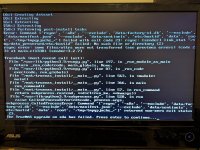I fixed the issue. It wasn't actually about MBR partitioning as that was being taken care of setting up the protective MBR partition as bootable, making the old and buggy HP bios to go ahead and boot from the GPT partition.
In my case it was about the udev settle not being enough of a wait before doing those lsblk functions inside the truenas-install script, and in some cases, the script is not waiting at all before issuing a lsblk.
I suspect this is why people commonly think truenas is "fussy" about USB drives as probably some drives are faster than others (mines are from 2015, and have worked fine with FreeNAS and then TrueNAS CORE up until now.
Another error was being presented by zpool create that it couldn't find the device path. Same underlying cause, there has to be a wait before that so that some asynchronous parts of the OS catches up before issuing the zpool create command.
Anyway, I did some modifications to the truenas-install script (see where it is with #which truenas-install, can't remember).
It's quite simple in the end:
at the blue wizzard installation screen, press CTRL+C to get the bash prompt. DON'T USE the included function to get the shell as the script would be still running and we want to modify that, don't we..
edit the truenas-install script
#vi `which truenas-install`
then put a sleep 1 just after the 3rd partition being created with sgdisk. you can spot it as it has -n3 between its arguments
put another sleep 1 after the udev settle, and before a lsblk command, just search for settle
and then in another function, can't remember the name. that uses lsblk, put a sleep 1 just before the lsblk.
then search for zpool create and put another sleep 1 before that.
then exit saving the file and issue a:
BOOTMODE=bios truenas-install
answer NO at the UEFI question and off you go with the installer.
If you're using ILO like I did with virtual DVD passed through the HTML5 virtual remote console, be sure to regularly click on various ILO tabs from time to time as to not let it log off, cutting out your DVD iso and abruptly ending the installation.
when it's finally complete (my installation wrote a few warnings at the end about a process being stuck for 240 seconds, it's fine) just issue a reboot command and that's it.
sorry for not being really concrete here but I just wrote from my memory what I did, am not going to do it again very soon as it took about 1 hour or so to complete.

